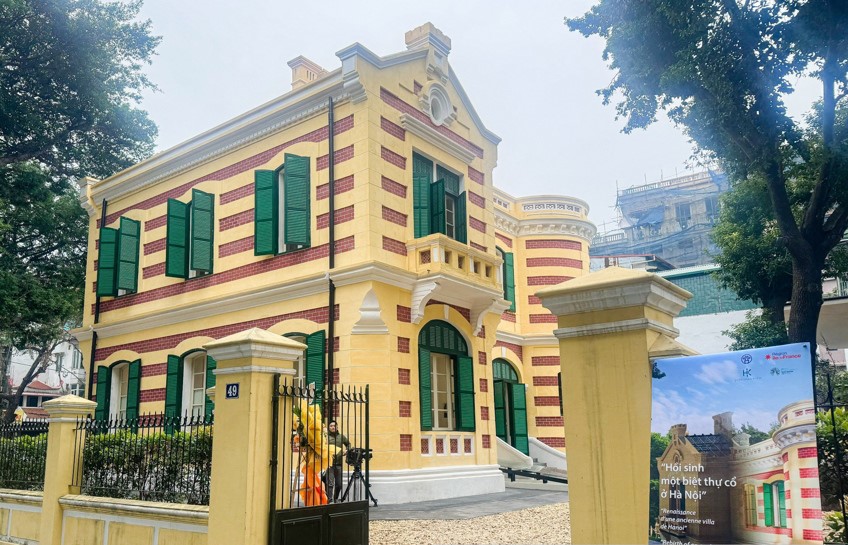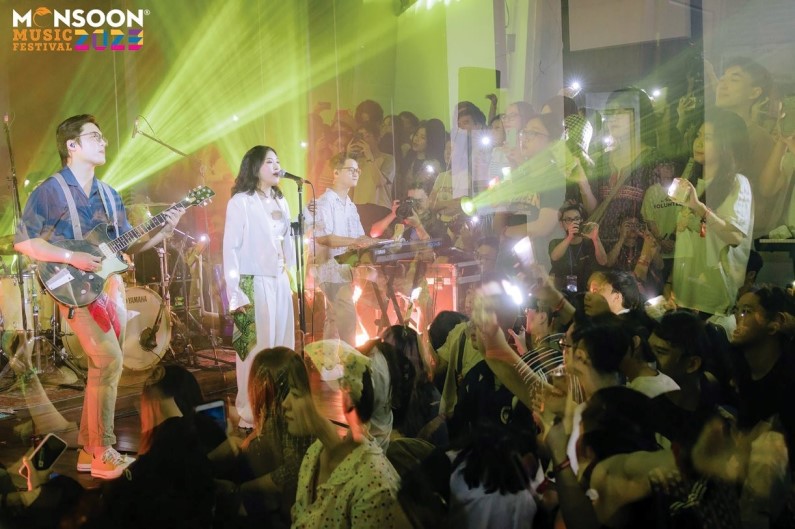
Although its area is only 5.2 square kilometers, Hoan Kiem District offers enormous potential for the development of cultural tourism, with a distinctive urban heritage and numerous significant cultural institutions, many of which have become attractive destinations for tourists coming to Hanoi.
Pham Tuan Long, Chairman of Hoan Kiem District People's Committee, said that the district has invested a lot of resources in developing cultural tourism in recent years, mindful that cultural tourism is one of the 12 cultural industries according to the government's strategy.
Hanoi - center of cultural industries
Hanoi is considered the country's cultural industry hub. The creative and cultural center in Hoan Kiem District holds great promise for the city's growth of cultural industries.
Recently, the 400-year-old house at 22 Hang Buom Street and the villa at 49 Tran Hung Dao Street became creative cultural spaces.
The Tran Nhat Duat Pedestrian Bridge, Phuc Tan Art Street, and Phung Hung Mural Street projects have done away with unsafe and unhygienic places and, most importantly, have raised public awareness about protecting the public environment and landscape.
| The French colonial mansion at 49 Tran Hang Dao Street has now become a cultural space. Photo: Lai Tan/The Hanoi Times |
In addition, Hoan Kiem District keeps in touch with research institutes to protect intangible cultural assets. The district encourages artisans in the trade streets to showcase handicrafts from nearby artisan villages, thus strengthening ties between Hanoi and other areas where handicrafts are still made today.
The result of these efforts is the economic development of the area. The budget revenue of Hoan Kiem District's first six months of 2024 reached the highest level ever. Tourism growth has recovered to the level of the period before the Covid-19 pandemic. On average, more than 30,000 tourists visit the area every week.
"During the summer months of June, July and August, despite the hot weather, we have still seen an increase in visitors compared to the same period last year, although less than other times of the year," said Long.
The cultural industry needs support from government agencies, especially investment in creative cultural spaces and support for artisans and artists.
"By combining the preservation of traditional cultural heritage with the support of creative artists, we can promote our culture and help artists showcase their creative skills to the international community and friends," he added.
State's support needed
The development of cultural industries will face many challenges in the coming years. The dynamic nature of the cultural and creative industries will require regular assessments, timely adjustments and continuous adaptation to new contexts in order to maximize existing resources and capture future development trends in the field.
According to Associate Professor Dr. Nguyen Thi Thu Phuong, Director of the Vietnam National Institute of Culture and Arts Studies (VICAS), it is necessary to continue to build a strategy to develop Vietnam's cultural industries until 2030, with a vision until 2045. It is essential to utilize all potentials and opportunities and solve challenges to develop focused and key cultural industries, maximize the economic factors of cultural heritage values, and ensure consistency and synchronization between industries, production, distribution, and consumption.
| Foreign tourists visit Quang Phu Cau Village in Ung Hoa District, which houses incense-making craft. Photo: Ngoc Tu/The Hanoi Times |
The potential of the handicraft industry was highlighted by Nguyen Ba Hai, Deputy Director of the Center for Investment and Industry and Trade Promotion, Ministry of Industry and Trade. He said that to preserve traditional craft villages' cultural soul, new products must be developed based on their strengths. Each product must act as a "magnet" to develop cultural tourism.
Many experts expressed the hope that the state needs to have mechanisms and policies to promote cultural industries. Creating conditions to support non-state enterprises and having tax exemption and reduction policies for enterprises engaged in creative industries are imperative.
According to musician Quoc Trung, the State currently has no specific policy to support private enterprises to develop cultural industries, although this is an area that needs investment.
Speaking from his experience in organizing the Monsoon International Music Festival, Trung said that private enterprises that want to use state cultural facilities have to overcome many obstacles in terms of funding and paperwork. As a result, many public cultural facilities remain unused and wasted.
"State support should be divided equally between state and non-state institutions to encourage private enterprises to contribute to the cultural industries," said musician Quoc Trung.
| Monsoon International Music Festival in 2023 takes place at the center of Hanoi. Photo: Thanh Viet Production |
Truong Uyen Ly, Director of Hanoi Grapevine Online Creative Space, echoed the same sentiments, saying that the State must provide tax breaks and income tax exemptions for businesses in the first few years.
"The private sector is a driving force behind the rapid development of cultural industries, so a preferential mechanism for the private sector is needed. Progress has been made in public-private relations, but fiscal support for the private sector needs to be worked out," Ly said.
She suggested that the government set up an inter-ministerial cultural industry action committee to promote connectivity in the development of cultural industries.









